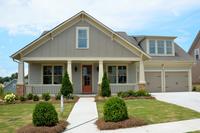Basic Allowance for Housing (BAH) paid to about one million service members living off base in the United States will rise by an average of 3.8 percent Jan. 1, nearly double the average two percent hike of last year.
How BAH recipients fare as individuals will vary by pay grade and assignment area. BAH rates are rising, or at least staying level, across 79 percent of the military's 365 housing areas, said Cheryl Anne Woehr, BAH program manager for the Defense Department.
In the 21 percent of areas where rents have fallen this past year, members already living there will benefit from BAH rate protection. This law allows members who are committed to rental agreements or paying off mortgages to continue to draw housing allowances at current rates.
So only service members who move after Dec. 31 into areas where rental costs have fallen will feel the affects of lowered rates for 2013.
BAH for a married career enlisted member in the grade of E-6 will climb an average of $60 a month in January. A typical married officer, rank O-3, will see an average increase of $55 a month, Woehr said. Rates for 2013 are online here.
Other pays will increase Jan. 1. Military basic pay increase will 1.7 percent across all ranks and pay grades. Basic Allowance for Subsistence (BAS) will increase 1.1 percent based on food price changes tracked by a Department Of Agriculture index. BAS for enlisted will be $352.27 a month up from $348.44. Officer BAS, which is always lower due to a quirky history of adjusting food allowances, will be $242.60 a month, up from $239.96.
Service members living off base overseas get an Overseas Housing Allowance instead of BAH. OHA is based on what members actually pay in rent. It also gets adjusted periodically as the dollar's value shifts against local foreign currency. But OHA is not adjusted in concert with BAH.
Veterans using the Post-9/11 GI bill get a monthly "living" stipend equal to the BAH rate in their area for an E-5 with dependents. VA will use 2013 rates to adjust the stipend in August, start of a new academic year.
BAH rates are adjusted based yearly based on changes in rental costs, utilities and renter's insurance premiums for various housing types. Those who are married or have children draw the higher "with dependents" rate in all housing areas. BAH payments will total $20 billion in 2012
Areas seeing some of the largest BAH increase this year include New York City (14.7 percent), Altus Air Force Base, Okla., (14.1 percent), Sumter/Shaw Air Force Base, S.C. (11.8 percent) and Honolulu County, Hawaii (11.2 percent) and Hanscom Air Force Base, Me., (10.8 percent).
Areas reporting some of the steepest rental declines include Portsmouth, New Hampshire/Kittery, Me. (-5.6 percent), Twenty-Nine Palms Marine Corps Base, Calif., (-5.1 percent), Fort Stewart, Ga. (-3.4 percent) and Montgomery, Ala (-2.6 percent.)
Since 2008, BAH "without dependent" rates have benefitted from an artificial floor. These rates for single members must match at least 75 percent of the local "with dependents" rate at the same pay grade.
By law, stateside housing allowances have to be based on the cost of housing for civilians with comparable incomes in the local area, Woehr explained. BAH rates are set to cover 100 percent of median rental cost, utilities and rental insurance in each area based on the type of housing officials deem appropriate to a member's pay grade and dependent status.
BAH rates are tied to the base or installation where military members are assigned.
"We don't have a specific mileage determination to set the military housing areas," said Woehr. "They are drawn generally around county lines with the installation or population hub at the center."
Local rental cost data are collected from May through July when housing markets are most active. Most data are gathered by military housing offices and exclude rents in high-crime areas or where housing is poorly constructed or near environmental hazards and mobile home parks.
The BAH law links one group of members to a specific type of housing: Junior enlisted (E-4 and below) with dependents must be given a housing allowance big enough to cover the median cost of renting a two-bedroom apartment and two-bedroom townhouses. With that as a foundation, officials developed rates by pay grade using rental cost data for six types of housing and different numbers of bedrooms in every housing area.
Write Military Update, P.O. Box 231111, Centreville, VA, or email milupdate@aol.com or twitter: Tom Philpott @Military_Update









